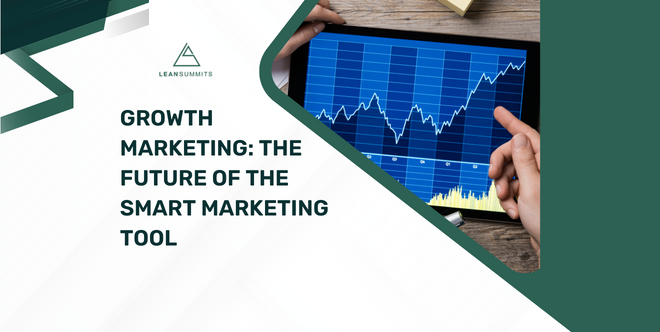How to Design an AI Marketing Strategy in 2024
Ever found yourself lost in the vast jungle of crafting an AI marketing strategy using AI tools, each claiming to be the silver bullet for your marketing needs? You’re not alone. The internet is bursting with options, leaving business owners like you grappling with confusion. It’s a classic case of too much information and not enough clarity.
But here’s the thing – we get it. We get the head-spinning dilemma of trying to make sense of the myriad AI tools vying for your attention. As fellow entrepreneurs, we’ve been there, scratching our heads and wishing for a beacon of simplicity in this complex landscape.
Here’s the good news. We’ve crafted a guide that’s not your typical tech-speak. No jargon, no confusing acronyms. Just a friendly, step-by-step solution designed to unravel the mysteries of AI in marketing. Let’s turn that confusion into clarity and transform the AI dilemma into a strategic advantage for your business. Ready to make sense of it all? Let’s dive in.
Why AI Marketing Matters:
In a world where attention is a currency and relevance is the key, AI becomes the secret sauce. Let’s break it down with some compelling statistics:
- Explosive Growth: The global AI in the marketing market is expected to reach $407 billion by 2027.
- Personalization Pays Off: Businesses that use AI for personalization see an average increase of 20% in sales.
- Time is Money: AI-driven automation can save marketers up to 16% of their time, allowing for more strategic thinking and creativity.
- Customer Experience Elevated: Over 60% of consumers expect personalized experiences from businesses, and AI is the key to delivering on those expectations.
- Predictive Analytics Magic: Companies using AI for predictive analytics witness a higher click-through rate.
These stats are not just numbers; they’re a testament to the transformative power of AI in the marketing realm. From saving time to boosting sales, the impact is real and tangible. Let’s unravel the mysteries and build a roadmap for your AI marketing success. Ready to dive in? Let’s roll!
Also Read: Will AI Replace Humans
Step 1: Understanding the AI Marketing Strategy Landscape
A. Understand AI in Marketing

In marketing, AI, or Artificial Intelligence, isn’t a sci-fi fantasy. Instead, picture it as your digital ally, ready to analyze vast amounts of data and transform it into actionable insights. The technological powerhouse enables businesses to make more informed decisions and enhance their overall marketing strategies.
In simpler terms, AI encompasses a set of technologies and tools that simulate human intelligence in machines. These machines can learn, reason, and adapt to various scenarios, allowing them to perform tasks that traditionally require human intelligence. Let’s delve into how AI’s capabilities can be harnessed to elevate your marketing game.
B. Recognize the Types and Applications of AI:
Machine Learning (ML): ML is the backbone of AI marketing strategy, acting as a data detective that uncovers patterns and trends within vast datasets.
Applications: Predictive analytics, customer segmentation, and personalized content recommendations.
Natural Language Processing (NLP): NLP is your linguistic maestro, enabling machines to understand, interpret, and generate human-like language.
Applications: Chatbots, sentiment analysis, and content creation.
Understanding these types of AI sets the stage for leveraging their applications in marketing. As we dive deeper, envision how these technologies can revolutionize your approach, making your strategies more efficient and customer-focused.
C. Acknowledge the Benefits and Debunk Common Myths
Benefits of AI in Marketing: Enhanced Efficiency: AI streamlines processes, automates repetitive tasks, and accelerates data analysis, freeing time for strategic decision-making.
Personalized Experiences: By understanding individual preferences, AI enables businesses to deliver tailored content and recommendations, fostering stronger customer connections.
Predictive Insights: AI’s ability to analyze historical data helps predict future trends and customer behaviors, allowing businesses to stay ahead of the curve.
Step 2: Identifying Core Components
A. Embrace Data Analysis and Insights:

Importance of Data-Driven Decision-Making: Data is the fuel for AI, powering its ability to provide meaningful insights. How to leverage: Identify key metrics, implement robust tracking, and use analytics tools for data interpretation.
Utilizing AI for Comprehensive Data Analysis: AI tools excel at analyzing vast datasets swiftly, extracting valuable patterns and trends.
Applications: Customer behavior analysis, market trends forecasting, and performance optimization.
Embracing data analysis and insights lays the foundation for a robust AI marketing strategy. Let’s explore how this data-driven approach can drive your decision-making and uncover hidden opportunities.
B. Implement Personalization:
Customizing User Experiences Through AI: Personalization goes beyond just using the customer’s name; it’s about tailoring every interaction.
AI’s role: Analyzing customer data to deliver personalized content, product recommendations, and targeted messages.
Tailoring Content and Recommendations Based on User Behavior: AI algorithms process user behavior data, predicting preferences and adapting content accordingly.
Benefits: Increased engagement, improved customer satisfaction, and higher conversion rates.
Personalization isn’t a one-size-fits-all strategy. It’s about understanding your audience deeper and adapting your marketing efforts to meet their unique needs.
C. Integrate Automation:
Streamlining Marketing Processes with AI Automation: Automation isn’t about replacing humans but freeing them from repetitive tasks.
AI applications: Automated email campaigns, social media posting, and data processing.
Examples of Tasks That Can Be Automated for Efficiency: Routine tasks like data entry, email responses, and social media scheduling can be automated.
Benefits: Time-saving, reduced errors, and the ability to focus on strategic aspects of marketing. Automation and AI work hand in hand to make your marketing efforts more efficient. It’s like having a reliable assistant that handles the mundane, allowing you to focus on your business’s creative and strategic aspects.
D. Embrace Predictive Analytics:
Forecasting Trends and Customer Behavior with AI: Predictive analytics uses AI to analyze historical data and predict future trends.
Applications: Anticipating customer needs, inventory management, and identifying emerging market trends.
Enhancing Decision-Making Through Predictive Analytics: AI’s ability to predict outcomes helps make informed decisions and strategies.
Real-world impact: Reduced risks, optimized marketing campaigns, and improved overall business performance. Predictive analytics isn’t about crystal ball gazing; it’s about leveraging historical data to make data-driven decisions that give your business a competitive edge.
Step 3: Implementing AI Tools in Marketing

A. Choosing the Right AI Tools
Evaluation criteria: Consider factors like ease of use, scalability, and alignment with business goals.
Factors to Consider When Selecting Tools for Specific Needs: Different tools cater to various aspects of marketing – choose based on your unique requirements.
Study Case studies: Explore how businesses like yours have benefited from specific AI tools. Choosing the right AI tools isn’t a one-time decision; it’s an ongoing process of aligning technology with your evolving business needs.
B. Integration with Existing Marketing Strategies:
Ensuring Seamless Integration with Current Marketing Efforts: AI shouldn’t disrupt your existing strategies but enhance and seamlessly integrate.
Strategy alignment: Identify how AI can complement your marketing channels and campaigns.
Maximizing the Synergy Between AI and Traditional Marketing: Traditional and AI-driven strategies can work synergistically for maximum impact.
Examples: Integrating AI into email marketing, content creation, and social media management. Integration isn’t about replacing what works; it’s about amplifying your efforts by blending AI seamlessly into your existing marketing mix.
Step 4: Overcoming Challenges
A. Addressing Privacy Concerns:
Strategies for Responsible Data Usage: Prioritize data collection and usage transparency to build customer trust.
Compliance: Ensure adherence to data protection regulations such as GDPR and CCPA.
Complying with Privacy Regulations: Understand and implement privacy regulations relevant to your industry and audience.
Benefits: Establishing trust, avoiding legal issues, and fostering a positive brand image.
Respecting privacy is a legal obligation and a crucial aspect of maintaining a strong and ethical customer relationship.
B. Skill Development and Training
Importance of Upskilling Marketing Teams for AI Adoption: Equip your team with the necessary skills to understand and leverage AI tools.
Training programs: Invest in workshops, online courses, and certifications to enhance AI proficiency.
Training Programs and Resources for Marketing Professionals: Platforms like Coursera, LinkedIn Learning, and industry-specific courses offer valuable AI training.
Benefits: Empowered teams, improved job satisfaction, and enhanced marketing capabilities. Empowering your team with AI skills isn’t just an investment in technology; it’s an investment in the growth and adaptability of your business.
Step 5: Study Case Studies
Explore case studies from various sectors, showcasing AI’s diverse applications. Identify patterns and strategies that align with your business goals. Understand the challenges faced and the adaptations made for success. Case studies aren’t just success stories; they’re valuable lessons that provide insights into how AI can be practically applied to achieve business objectives.
Step 6: Keep an Eye on Future Trends in AI Marketing

A. Emerging Technologies Shaping the Future of AI in Marketing:
Anticipated Developments in AI Technology: Explore emerging trends such as voice search, augmented reality, and AI-driven chatbots.
Industry impact: Understand how these trends might reshape marketing strategies.
The Potential Impact on Marketing Strategies: Consider how these emerging technologies can be integrated into your marketing plans.
Early adoption advantages: Position your business as an innovator in the evolving landscape. Keeping an eye on the future isn’t just about staying relevant; it’s about staying ahead of the curve and positioning your business as a trailblazer.
Final Words
AI is not a futuristic dream but a practical ally for enhancing marketing strategies.
Understanding AI components’ benefits and debunking myths is crucial for effective implementation.
As a Growth Marketing agency, we at LeanSummits have achieved resounding success for our clients using an AI marketing strategy. If you’re a business owner, you, too, can do that.
With the right understanding, tools, and strategies, AI becomes a powerful ally in shaping a successful and sustainable marketing approach. The future is now – embrace it!
Schedule a free consultation with us to understand how you can leverage AI to bring the best out of your marketing efforts.



